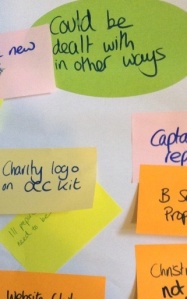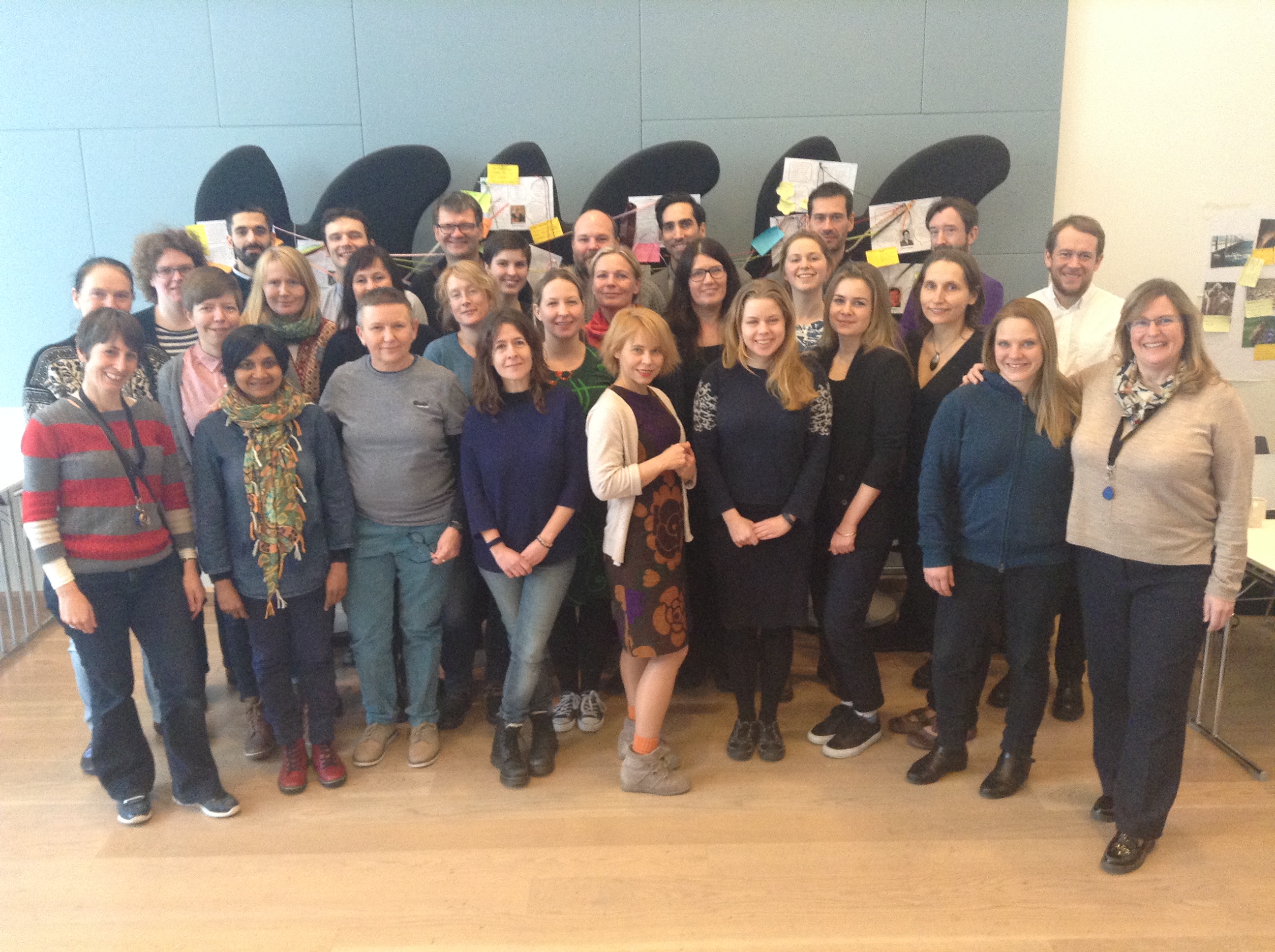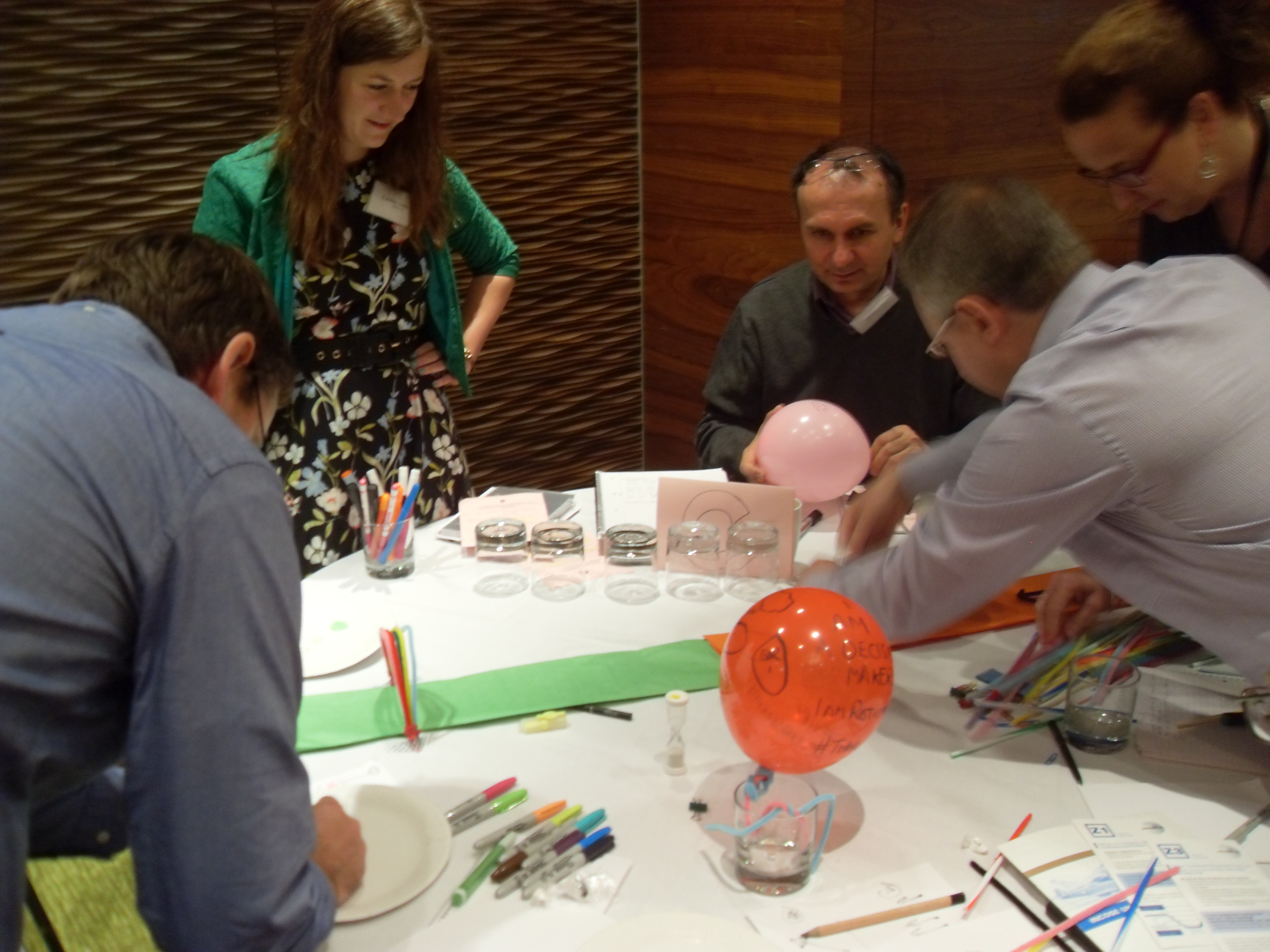Business meetings are often limited to 1 to 2 hours. They need to be tightly controlled to avoid overrunning and to make sure that you make effective use of everyone attending.
Contrary to some popular belief, meetings can be useful if run effectively. Many organisations use meetings well to:
- Have a dialogue to reach a decision of importance the organisation/project/team
- Identify key themes for a future strategy or plan
- Share challenges and explore options to address these
Last night was a significant achievement for the club. We made key decisions about important issues and were finished by 9.30. There were smiles and people are now looking forward to future meetings. Thanks for helping us to change the way we do things – Paul Luxton
To create a useful meeting a few simple steps can help you along the pathway to productivity.

Clarify the Purpose
What is the meeting for? Too many meetings exist because historically they have always done so. In the days before electronic communication meetings were an effective way of getting a message out to everyone at one time but to just use a meeting as a one way information giving forum is a total waste of time. Using email, social media and discussion boards will achieve this end more effectively.
Once you are clear on the purpose of the meeting you can decide who needs to be involved and then get down to the business of setting the agenda about what needs to be discussed. Check out ABC of meetings
Manage the Agenda
Your agenda for your meeting is an essential planning tool. It should set out why each item is being discussed, what outcome you need from the meeting (eg a decision, a commitment for action) and should give an allocation of time based which is agreed with the item presenter.
We intervened with a community sports group who had a regular business meeting which started at 7.45 and often did not finish until 10.45. The team recognised that they had a problem and that “the kind of meetings we have now are neither enjoyable, productive or sustainable”.
We worked with the chair and secretary to analyse the last three meetings and to review the purpose of their face to face meetings. We used this to create a list of guidelines to club members setting out the criteria for bringing items to the committee and some other options that could be used to disseminate information.
The result was that the following committee meeting had a limited agenda and was over in 1.5 hours leaving the committee time to talk to each other and socialise, sharing their love of their sport.

Reviewing agendas
Making Decisions
Most items discussed at a meeting will result in a decision. Be clear about whether that decision needs to be made by a majority vote or by reaching consensus. If aiming for consensus you need to provide more time to allow clarification of concerns to be raised and have a clear process to follow
A major engineering project was starting to fall behind schedule due to communication issues and conflict between the three project teams. We facilitated a process so the teams could outline their expectations of each other’s behaviour. It was important that everyone was involved in the decision about behavioural expectations so we used the colour consensus cards so people could flag green for agreement, red for disagreement and yellow for some concerns.
Items were only accepted if we could reach a mainly green/yellow consensus. If there were any red cards showing after the consensus discussion the item had to be put to one side. Although this is not a quick process it does make sure that only items that have full commitment are agreed to.
Other methods to make decisions are to take a vote of members and make the decision based on the majority viewpoint. In smaller groups it is better to ask each attendee to state their position by going round in turn. This can help the views of the minority be heard and also makes it harder to make a decision because the chair assumes everyone is in agreement.
We worked with a community gardening project who had reached stalemate on a decision, they just could not reach consensus. We guided a structured process to explore both the advantages and disadvantages of the two options and then did a final round to hear what everyone’s preference was for. It was clear that the majority preferred one option and it was helpful for this to be heard so that although consensus could not be reached the two members who opposed the option were able to accept that this was the overall preference for the whole group and they stepped back from their opposition.
“I know we did not reach a consensus and we are losing two people but this has happened in a moving forward and respectful manner” Roxanna Summers, Back to Front
Allocate Actions
A meeting with no action is pointless. You also want to avoid the actions all being allocated for one person (often the chair!) Two tips which often help are:
- Prepare a wall chart with everyone’s name on it and then space for actions to be recorded against their name, this avoids some leaving the meeting with lots of actions and some with none. It makes it very visual and can help to prompt the chair to remind people to commit to a specific action.
- The chair of the meeting can respond proactively to comments made during the meeting to convert these into action – “thanks for that x, can you follow that up with x and email out the outcome, we will record that in the action plan”

Minutes
The minutes can be drafted in advance based on the purpose of each item so they use the agenda to shape an introduction to each item and the purpose of the discussion and then record the actions to be taken.
It is useful to summarise the planned actions in an action plan as well so that there is an easy document to track progress before the next meeting.
Part of the planning for the next meeting will involve the chair or secretary reviewing the agreed actions and checking on progress so this can be minuted in advance of the meeting and a very short verbal overview given.
Review what went well and how to improve
At the end of the meeting set aside 5-10 minutes to share what worked well and to give constructive tips for the next meeting. Read our blog on Agile Team Working – making time to talk

If you would like one of our facilitators to talk to you about how to make your meetings more focused, engaging, productive and shorter then give us a call.















